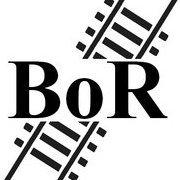Search the Community
Showing results for tags 'bahn'.
Found 2 results
-
Hi all, after a quite long absence from the forum, I'd lilke to show you this small MOC I just prepared. It should have been a model for the Octrainber, but since I've no time to prepare the whole diorama, I'll show you only the little railcar. The Egger-Bahn is a model line created in the 60s, based mainly on fictional freelance rolling stock (even if some models were inspired by real prototypes). These models were in 1:87 scale, running on H0e track - therefore simulating a narrow gauge system. One of the main models was the articulated steam railcar you can see in this picture taken from internet. The lillte railcar is articulated and composed by a steam motor and an half-passenger wagon. It is a very nice model and I've always liked it! Since I'm working a lot on big scales, I wanted to do something different, so I got back to 6-wide on 4-wide track: It's super-deformed as my other small locomotives I made , and it's based on the 9V red MicroMotor. It can run on black Lego narrow-gauge track and on LEMAX Christmas Train track - which is perfect for small Lego models (and features straights and larger curves). Here below you can see the different components, like the MicroMotor, the rear bogie, and body parts (motor and trailer). And here's a detail of the motor and passenger trailer. As you can see, the 9v MicroMotor is mounted upside-down, and moves the rear wheels of the steam motor. The power comes from a 9v battery box, but I succeded to run the Micromotor on small 12v batteries. Some home made electronics may save space! The batteries should be placed near the trailer link, therefore their weight - insisting on the only driven axle - can improve traction. I hope you like it! Ciao! Davide
- 11 replies
-
- railcar
- articulated
- (and 6 more)
-

[MOC] Locomotive DR E 94 - Bricks-on-Rails of iron pigs and crocodiles
Bricks-on-Rails posted a topic in LEGO Train Tech
Dear Community, The week has passed very fast once again and like promised I would like to present a model for the start of the weekend. But first a little text. Some of you may have already seen it while browsing through my Flickr channel. It's the "German Crocodile", the DR E 94. It was built from 1940 and was mainly used in heavy goods traffic in Germany and Austria. 200 units were built. The nickname "German crocodile" was given to the locomotive because of the optical similarity to the "Swiss crocodile, the SBB Ce 6/8", which comes much closer to a crocodile. But the real nickname is not "crocodile" but "iron pig". They were designed for freight trains with up to 2000 tons. This heavy electric locomotive fascinated me already as a child on our domestic model railway layout. Apparently effortlessly she pulled the at that time seemingly endless coal train over our 4m² plate. The model is approx. 43cm long, 8.5cm wide and approx. 12.5cm high, with extended pantographs even higher. The locomotive can be motorized with two Power-Functions M motors, one of which is housed in each "crocodile snout". The IR receiver and battery box fit easily into the spacious cab. Inside, it was even possible to design both cabs. The detailed roof can be removed for easy access to the interior details and electronics. The two chassis, each with three axles (all driven) are pivoted and also very detailed. Here were not the "standard railway wheels" used, but the large spoke wheels of the Emerald Night, as these fit much better to the scale. By the way, the size of the model fits perfectly to the already introduced "SBB De 4/4". What has always bothered me with this locomotive, as well as with the "sister" from Switzerland and other locomotives of similar design, is the relatively large gap, which is between the driver's cab and the two " mouths " (also to be seen with the crocodile from LEGO set 10183). This gap is usually quite large with LEGO models, as the available curve radius is very small compared to the scale. In the real model, however, the gap is hardly noticeable. My goal was to "develop" a system that allows cornering but keeps the gap as small as possible. The solution is relatively simple. Below the cab there is a kind of rail system which is attached to both " mouths " and thus enables the three elements to be pulled apart if necessary, e.g. in curves. On a straight line, the elements are pulled together again by means of an attached rubber band. The assembly attempts have left a good impression on me. Unfortunately also a long, heavy train causes, that the elements can pull each other a little bit apart when driving straight out. As with the "SBB De 4/4" it is possible to build the locomotive in three different colours: - dark green (still my favourite) - grey - blue (DB colouring) And now have fun looking at the pictures. Criticism welcome. The example (Source: Wikipedia) More pictures in the flickr album With kind regards Martin | Bricks-on-Rails- 3 replies
-
- train
- locomotive
- (and 6 more)
